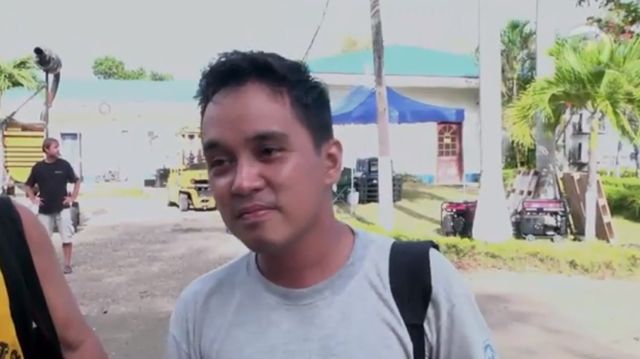SUMMARY
This is AI generated summarization, which may have errors. For context, always refer to the full article.

MANILA, Philippines – Cebu, the biggest port in the south and one of the most prosperous in the country, is a crucial cog in the relief efforts for Eastern Visayas – a transhipment point for relief goods and personnel and a haven for victims.
But the influx of evacuees also puts a strain on the resources of the city.
Ayee Macaraig talks to officials and evacuees and she files this video blog.
The world’s biggest cargo planes and best humanitarian teams come and go here at the Mactan Airbase in Cebu, the hub of relief operations in the Visayas. More than a week after typhoon Haiyan, the international community is working with the Philippine government to quicken the pace of aid in key areas like Tacloban and Guiuan and bring much-needed food, water and medical care to the hardest-hit areas.
They’re bringing back with them survivors who seek refuge here in Cebu after losing their homes and loved ones in the disaster. But the big question now is, what life awaits them ahead.
RENE ALMENDRAS, CABINET SECRETARY: They have big reasons to go back home to Tacloban, either they have family or there are roots there. That’s the Filipino in us. The idea is temporarily they’re here and eventually they will go back. With the kind of rebuilding and the activity of rebuilding in the devastated areas concerned, we’re almost sure they’ll go back.
JEFFREY ROBENTA, EVACUEE FROM TACLOBAN: Sa Manila muna then after, pag okay na Tacloban, babalik kami. (I’ll stay in Manila, then after Tacloban is okay, we will return.) [Q: Gusto niyo pang bumalik?] Yes oo kasi yun yung pinaka-hometown namin, Tacloban talaga. Nawasak man, babangon din. Babalik pa din kami doon. Doon kami naninirahan, doon kami nabubuhay. (Tacloban is our hometown. It may have been destroyed, but it will rise again. We will return. We lived there, we have our living there.)
But not all of Leyte residents want to go home.
For them home means a better life for their children, and that’s not where they came from.
VIOLETA PAGATAN, EVACUEE FROM TANAUAN, LEYTE: Yung bahay namin kahit isang ano wala wala ka na nakikita, puro buhangin bahay namin kaya lumuwas na lang kami, kawawa naman yung mga bata wala naman akong pinili, gusto ko lang ligtas mga anak ko sa tubig, mabaho pa sa Tacloban, ang baho, wala pa kami tinitirhan, maganda nang lumikas na kami muna. (Nothing is left of our house, so we chose to leave. I pity my children. I want my children safe from floods. There is still a stench in Tacloban, it was better for us to evacuate for now.)
As the Philippine government continues to strive bringing relief to the 9.8 million people affected, it also has to start helping prepare a fresh start for its people who nearly lost everything. Ayee Macaraig, Rappler, Cebu.
– Rappler.com
Add a comment
How does this make you feel?
There are no comments yet. Add your comment to start the conversation.